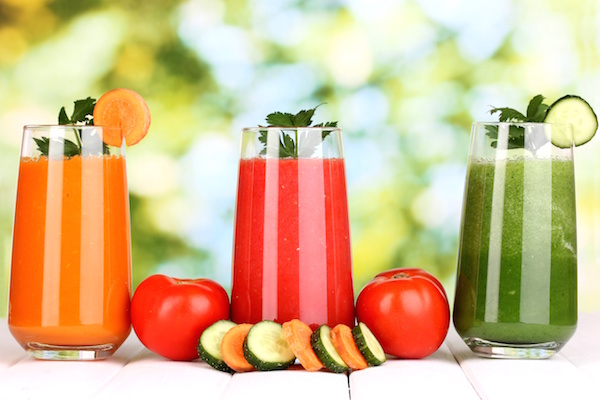FRIDAY, May 20, 2016 (HealthDay News) — The Nutrition Facts panel on packaged foods in the United States is about to get a long-awaited facelift, with a redesign emphasizing realistic portion sizes and added sugars.
The announcement Friday by the U.S. Food and Drug Administration reflects changing science and an attempt to rein in Americans’ unhealthy eating patterns and help consumers make better choices, the agency said.
The updated design, for instance, will highlight “calories” and “servings,” and show how many grams of sugar have been added to a food, along with the percent daily value (%DV) for “added” sugars.
“It is difficult to meet nutrient needs while staying within calorie limits if you consume more than 10 percent of your total daily calories from added sugars, and this is consistent with the scientific evidence supporting the 2015-2020 Dietary Guidelines for Americans,” the FDA said in a news release.
Serving sizes will better reflect how much people really eat and drink. For instance, foods that can be downed in one or more sittings — such as a bag of chips or a pint of ice cream — will contain both “per serving” and “per package” calorie and nutrition information.
“People will be able to easily understand how many calories and nutrients they are getting if they eat or drink the entire package/unit at one time,” the FDA said. Quantities consumed have changed since the current serving size requirements were published in 1993, the agency noted.
When a container holds between one and two servings, such as a 20-ounce soda, the calories and nutrient information now must be labeled as one serving because that’s how people usually drink it.
“For more than 20 years, Americans have relied on the Nutrition Facts Label as a leading source of information regarding calories, fat and other nutrients to help them understand more about the foods they eat in a day,” FDA Commissioner Dr. Robert Califf said. “The updated label makes improvements to this valuable resource so consumers can make more informed food choices — one of the most important steps a person can take to reduce the risk of heart disease and obesity.”
First Lady Michelle Obama, who has made obesity prevention a priority, was expected to discuss the redesign on Friday.
“I am thrilled that the FDA has finalized a new and improved Nutrition Facts label that will be on food products nationwide,” she said in the news release. “This is going to make a real difference in providing families across the country the information they need to make healthy choices.”
The final revision comes more than two years after the new rules were proposed.
Here’s what else you’ll see when the law takes effect in July 2018:
- Updated daily values for salt, dietary fiber and vitamin D, in keeping with the 2015-2020 Dietary Guidelines for Americans and recommendations from the Institute of Medicine. “Daily values are reference amounts of nutrients to consume or not to exceed and are used to calculate the %DV that manufacturers include on the label,” the FDA noted.
- Vitamin D and potassium content will include both total grams and the %DV. Some people are deficient in these nutrients, putting them at higher risk for chronic disease, the FDA said.
You’re unlikely to see values for vitamins A and C. They’re no longer required because deficiencies of these vitamins are rare, although food makers can choose to include them, the FDA said.
The agency is also saying goodbye to “Calories From Fat” because research shows the type of fat is more important than the amount. “Total Fat,” “Saturated Fat,” and “Trans Fat” will still be required.
The new label must be used by July 26, 2018, by most manufacturers. However, food makers with less than $10 million a year in sales will have until 2019 to comply.
Nutritionists applauded the FDA’s move.
“This is a major breakthrough in nutrition history. As obesity rates rise it is important for consumers to be able to interpret fool-proof nutrition facts,” said Sharon Zarabi, a nutritionist at Lenox Hill Hospital in New York City.
“It’s no wonder half the patients I see are confused with the current food labels. It’s nearly impossible to give someone a bottle of a sweetened beverage, listing calories and sugar for ‘half’ the bottle and expect us not to drink it all.”
Connie Diekman is director of nutrition at Washington University in St. Louis. “As a registered dietitian I am happy to see the addition of ‘added sugars’ to the label,” she said. “This addition will not only make the amount of added sugars clear, it will also help consumers see the presence of natural sugars, sugars that come with the total nutrient package of a food.”
She also said the inclusion of “real” servings sizes will hopefully help people decide how much to consume.
Diekman also said the “inclusion of potassium and vitamin D are important minerals for overall health and might help consumers make food choices based on nutritional value, not just fat, calories or carbs.”
Added registered dietitian Christine Santori, program manager at the Center For Weight Management at Northwell Health’s Syosset Hospital in New York: “Finally, a food label consumers have a chance of understanding! Teaching clients to understand and navigate the food label has always been a challenge. The improvements made with this model have been a long time coming.
“Now, serving sizes must reflect what consumers realistically will have. Not too many people will have only half of a 20-ounce soda bottle, but those are the serving sizes upon which the calorie information has been based,” she added.
More information
The U.S. Department of Agriculture has more about eating healthy meals.
Copyright © 2024 HealthDay. All rights reserved.

